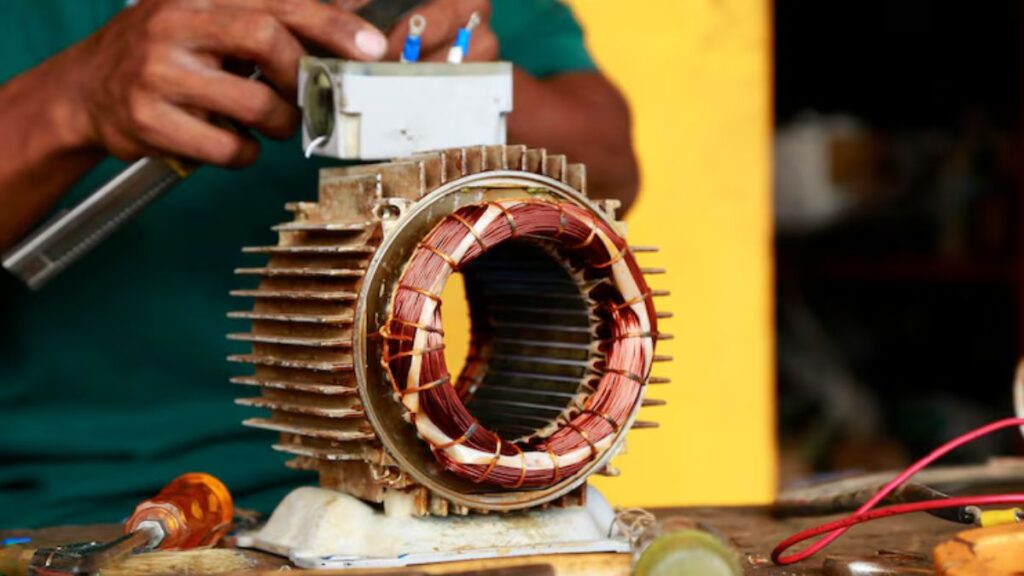Automotive electrical systems become complicated due to the implementation of traditional alternator systems with multiple wires requiring external voltage regulators. The GM one wire alternator operates as a simplified charging system which decreases wiring complexity. What are the operational elements and market acceptance factors of this simplified device used by car experts and automotive lovers? The article explores GM one wire alternator operations together with its advantages and steps to installation along with the reasons behind its general acceptance.
Understanding the GM One Wire Alternator
What Is a One Wire Alternator?
The one wire alternator functions through a single wire which links the alternator to the battery system. Traditional alternators need three distinct wires but the one wire alternator combines an integrated voltage regulator with self-excitation to make charging systems easier. The single wire design has two advantages by minimizing electrical wires and decreasing potential system breakdowns.
How It Works
When installed on vehicles the GM one wire alternator starts charging the battery when the engine spins between 1,200 to 2,400 shaft RPM according to its amperage rating. The alternator charges by itself without requiring an external voltage source for initiation. The alternator operates at a stable voltage level between 13.5 to 14 volts which sustain battery charge while powering all electrical systems of the vehicle.
Advantages of the GM One Wire Alternator
Simplified Installation
Installation becomes effortless primarily because of this device’s single wire connection. Easy installation is possible because the device requires just one wire connection so it suits both experienced do-it-yourselfers and professional technicians. The easy single-wire system makes both installation faster as well as minimizes the potential for wiring mistakes.
Cleaner Engine Bay
The single wire connection of a one wire alternator results in improved engine compartment aesthetics by removing both extra wires and external regulators. The neat installation pattern makes this system attractive for both custom-built vehicles and restorations focused on appearance.
Reliable Performance
A built-in voltage regulator delivers consistent output voltage which makes the electric system of the vehicle more dependable. The simplified system contains fewer components which reduces failure risks thus improving vehicle performance.
Versatility in Applications
The GM one wire alternator can be utilized among many vehicles which include classic cars hot rods and custom constructions. People tend to select this device because of its versatility when they move from outdated charging systems to contemporary alternatives.
Installation Guide
Tools and Materials Needed
- GM one wire alternator
- The wire selection depends on alternator strength and battery location placement.
- Wire connectors and terminals
- Wrench set
- Multimeter
- Protective gloves and eyewear
Step-by-Step Installation
- Disconnect the Battery: To avoid electrical accidents one should always begin by removing battery’s negative terminal connection.
- Remove the Old Alternator: The first step involves removing the replacement alternator by undoing bolts which secure the unit to its mounting bracket when you have an original device to change.
- Install the New Alternator: The GM one wire alternator requires installation onto the current bracket while maintaining appropriate drive belt position.
- Connect the Charge Wire: The output wire from the alternator should lead to the positive terminal of the battery or the positive terminal of the starter solenoid.
- Ensure Proper Grounding: A ground wire should be installed from the alternator housing to the engine block or chassis because the mounting provides only limited grounding but solid connections are important.
- Reconnect the Battery: After securing all necessary connections you can reconnect first the negative terminal of the battery.
- Test the System: After starting the engine users should verify correct battery charging by measuring the alternator output with a multimeter.
Considerations and Potential Drawbacks
Lack of Warning Light Functionality
Additional wiring becomes necessary for one wire alternators to activate the dashboard charge warning light. A few alternate models come with terminals that permit users to enable warning lights.
Initial Excitation RPM
A specific engine speed at RPMs is mandatory before an alternator will start charging. A brief moment of increasing the RPM after starting the engine can help initiate charging.
Wire Gauge Requirements
A correct match in wire gauge serves as the fundamental requirement for keeping alternator output under safe control. A 100-amp alternator requires an 8-gauge wire as its basic specification although higher output alternators need larger wire sizes.
Conclusion
The GM one wire alternator provides vehicle charging systems with an easy installation method while delivering reliable performance. Its basic wiring design not only prevents possible trouble but also generates a neater engine bay which explains why experts and automotive fans choose this product. People need to address certain factors like initial excitation RPM together with wire gauge requirements but the positive aspects usually offer more value than negative elements. The GM one wire alternator presents itself as a useful solution that works well for vehicle upgrades of classic cars as well as custom builds.



